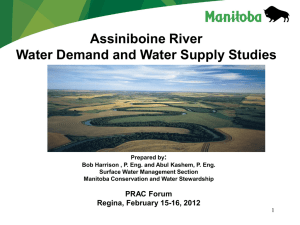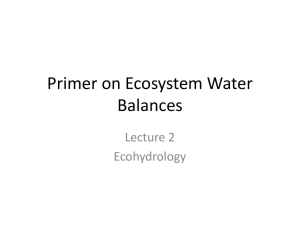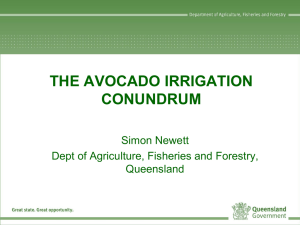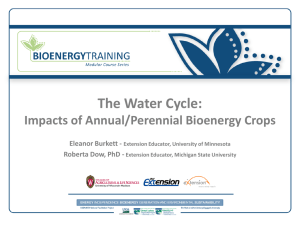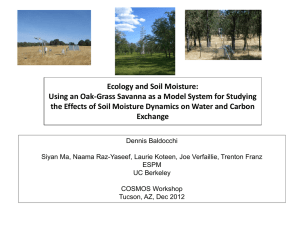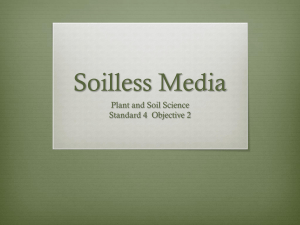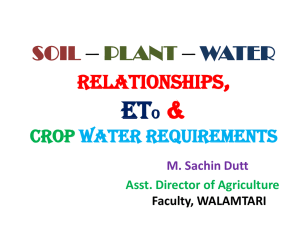Measure to Manage Nutrients and Water
advertisement
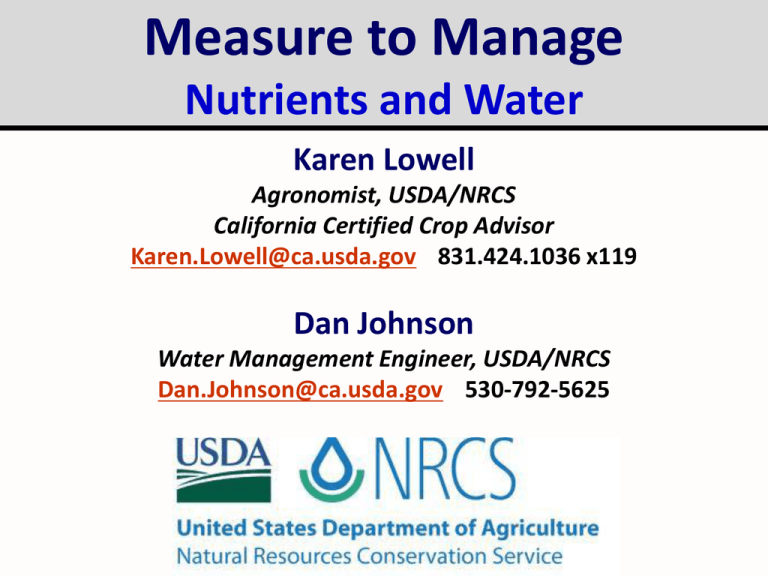
Measure to Manage Nutrients and Water Karen Lowell Agronomist, USDA/NRCS California Certified Crop Advisor Karen.Lowell@ca.usda.gov 831.424.1036 x119 Dan Johnson Water Management Engineer, USDA/NRCS Dan.Johnson@ca.usda.gov 530-792-5625 Road Map For Our Session Today • Measure to Manage Concept • Nutrient Budget – Preparing a Nutrient Budget: Inputs – Predicting Plant Available Nutrients – Resources for Estimating Crop Needs • Water Budget – How and Why of Soil Water Monitoring – Measurement Options Why Measure to Manage? • Plan management • Evaluate outcomes • Optimize crop yield and quality • Avoid problems Basics of Measure to Manage • Quantifiable Information • Capacity to Measure • Knowledge in Context Key Elements for Nutrient Management • Management by The 4 R’s • Irrigation Water Management • Nutrient Budget Nutrient Budget Worksheet Fundamentals of Nutrient Budget What are the inputs? What’s available? What is the crop need? What are the Inputs? Measure to Manage SOIL COMPOST WATER lbs/acre foot of water Nitrogen (as N) 62 lbs of Nutrient/Ton Dry Weight Basis What is available? • What is available - predicting biological and chemical processes •N from Soil Organic Matter (SOM) •N from Irrigation Water •N, P and K from Compost •N from Cover Crops What Does The Crop Need? You have this as a handout. If you didn’t receive it, send me an email and I will send it to you. karen.lowell@ca.usda.gov Irrigation Water Management • • • • Track your soil moisture content Know what your soil will hold Know your crop soil "dryness" limits Add water while doing your best to keep it between the lines Making every drop count means counting every drop Know What Your Soil Can Hold Two Key Points: • There are optimum levels of water in the soil. • The soil can only hold so much water. Soil Moisture Content vs. Time Root Zone Moisture Content Field Capacity Allowable dryness 2 1 0 Dry June 14 June 21 Date June 28 Irrigation Wet You decide how long to run the system Practical use – Looking ahead Practical use – Looking back Monitoring Soil Moisture Karen Lowell Agronomist, USDA/NRCS California Certified Crop Advisor Karen.Lowell@ca.usda.gov 831.424.1036 x119 Monitoring Soil Moisture Soil Moisture by Feel and Appearance Monitoring Soil Moisture Climate-Based Method • Calculates inches of crop water use • Sensors collect climatic data • Equation (model) processes data to calculate “reference” ET (or ETo) Wind speed Solar radiation • Estimated crop ET (ETc) is the product of ETo X the Computer current crop coefficient (Kc) • Kc will vary by crop and stage of growth Humidity and Temp Monitoring Soil Moisture Soil Water Tension (Tensiometers) Monitoring Soil Moisture Electrical Resistance “Gypsum blocks” “Watermarks” • Display data in centibars of suction • Have a wider operating range (0-200 cb) than tensiometers • Requires careful installation • Relatively popular Monitoring Soil Moisture Capacitance sensors • One “probe” typically has sensors at multiple depths • Becoming more popular • Requires very careful installation • Readings in % moisture



